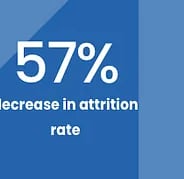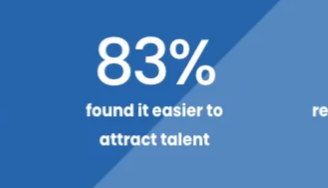Will We All Be Working Four Days a Week Soon?
4-Day Work Week: Boost Productivity & Employee Wellbeing! Explore the pros & cons of shorter work weeks & how technology can make it work for all.
REMOTE WORKFUTURE OF WORKWORK-LIFE BALANCEEMPLOYEE ENGAGEMENT
Aria Caffaratti, MBA, PMP
5 min read
Are you one of those lucky people who have control over your working time? Studies show that flexible workplace arrangements are beneficial to individuals as well as organizations. According to the World Population Review, a four-day workweek reduces stress and stress-related afflictions and improves employee work-life balance. Consequentially, it elevates the overall quality of life, improves satisfaction, and boosts motivation.
Global Examples
Four-day trials have been launched in different areas worldwide — Germany, Brazil, Portugal, South Africa, Australia, Ireland, USA. You can find more information about the results here. The largest ever four-day group trial took place in the UK and even though I was not lucky enough to work in an organization that participated in it, the spillover effects were significant.
During the pandemic, the boundaries between work and life were erased, and workers realized how much time and money they spent commuting and maintaining their previous lifestyles. On the other hand, skilled employees who stayed home found themselves constantly logged in and working, leading to inevitable burnout.
When the four-day week initiative proved successful and boasted of a 71% decrease in employee burnout and a 55% increase in ability, organizations took stock of the situation. Work as we knew it had to change.
Prior to the trial, many leaders debated how the change would affect efficiencies and revenues. Surprisingly, the results showed a 35% increase in revenues. Having in mind improved retention — attrition rates decreased by 57% — shifting to a four-day working week was an efficient way to save money.
As management professionals debated the results, companies started to offer more flexibility: work from home, hybrid arrangements, flextime, etc. None of my previous colleagues can boast of a four-day working week, but every single one of them still living and working in the UK has a better work-life balance in comparison to how we lived (and worked) ten years ago.
Case Study: Japan
The Tokyo Metropolitan Government is planning to introduce a four-day workweek starting April next year. According to the Japan Times, the initiative is part of a push for work-style reform. Gov. Yuriko Koike emphasizes the importance of flexible workstyles, allowing workers — especially women — to find a healthy balance between their careers and personal lives. The current system utilizes flextime allowing to adjust working hours and resulting in an extra day off once a month. The new initiative will revise schedules enabling one extra day off per week.
Japan suffers from an aging population — birth rates are amongst the lowest globally. Seeking to support young families, the Parliament passed revisions effective from next April. According to the new regulations, employees with young children will be allowed flexible work options — working from home or shorter working hours. Furthermore, companies with over 300 employees will be required to track and disclose paternity leave-related data to the authorities.
Tokyo is not the first Japanese area to push forward flexible work arrangements to support young families. Other prefectures already have a four-day workweek and/or alternative work schedules — Miyagi, Ibaraki, Chiba, and Iwate. As the regions measure success, the initiative is bound to spread across different geographic regions and professional areas.
Other Initiatives
My birth country — Lithuania — also suffers from a significant decrease in population. As a result, earlier this year the Government passed a bill coming into effect next April. According to the new policy, public-sector employees with children under the age of three will be allowed to work 32 hours a week without any reduction in their pay. Assuming the public sector follows the trends set by the UK and other countries, positive results could boost confidence in more businesses rolling out similar initiatives.
Positive Outlook
According to the non-profit organization 4-Day Week, shorter workdays mean increased efficiencies and higher retention rates. Research shows that 25% of companies who trialed 4-day working arrangements observed an increase in revenue in comparison to the year before. At the same time, the resignation statistics dropped by 32% and 83% of organizations reported it became easier to attract talent.
The same research suggests that 66% of participants experienced a reduction in burnout and a 54% increase in their work ability. Consequentially, 94% of organizations that participated in the trial wanted to continue the initiative.
Challenges
However, a four-day week is not attainable for everyone — it’s a matter of profession and industry. Living in the UK, I realized we worked more than our colleagues all over Europe — CIPD suggests that UK workers put in an average of 42.5 hours a week (in my case, it was significantly higher!). Some countries average around 35–37 hours per week. Naturally, if we are discussing a four-day working arrangement, the question is whether we would be able to change our workloads.
Before rolling out AI initiatives, the simple answer was no. When accommodating personal events and taking a day off, I used to work additional hours — sometimes leaving the office at 7 PM or even later. Some days would start as early as 6 AM. Did it improve my mental health, stress levels, and motivation? No. Would I have been happy to shift to a four-day week? Depending.
Not having medical conditions or caring responsibilities means I can plan my time accordingly. I would probably see the trade-off as worth making and plan to enjoy my three-day weekends to the fullest. Most of my then-colleagues, unfortunately, did not have that kind of a choice.
The Future of Work
As the professional landscape evolves, we innovate and adapt. The future looks bright, yet the change process is challenging. CIPD reports that companies sometimes struggle to ensure accountability and therefore enforce guidelines on how to manage a four-day week.
For example, discouraging non-work or medical appointments during work hours. This separates the workforce into two groups:
professionals who might find a four-day working week empowering;
others who experience a loss in other types of flexibility, especially if they have medical issues or caring responsibilities.
However, as Open AI changed our work environment, utilizing AI tools through automation and integrations could fill the gaps. But this opens a new can of worms with discussions about costs, work practices, and professional skills.
If Einstein and Agentforce can do our jobs, will companies settle for a four-day working week? After all, a bot does not require social security and insurance payments — yet operations run 24/7. A rather attractive long-term investment.
Conclusion
Employee benefits:
Increased productivity and improved work-life balance
Reduced stress and burnout
Cost and time savings
Employee disadvantages:
Longer workdays
Scheduling conflicts and shorter deadlines
Potentially increased stress
Employer benefits:
Increased productivity and improved work-life balance
Potential cost savings
Environmental benefits
Improved retention rates and more opportunities to attract talent
Employer disadvantages:
Not suitable for all industries
Customer service challenges
Possible decrease in employee engagement due to shorter deadlines and increased stress
Whilst many can reap the benefits of a shorter work week, the World Population Review shows that certain industries or businesses would have trouble absorbing the loss of hours even if productivity does not drop.
Examples include healthcare organizations, hotels, and similar services. Whilst a factory could produce its output throughout four days of the week and save money keeping its facilities closed on the fifth day, many other businesses still need to maintain their operations. Unless we find ways to leverage our technology and craft innovative solutions, a four-day working week might remain a privilege reserved for the select few.
On the other hand, if we integrate innovative solutions, embrace flexible work arrangements, and prioritize employee wellbeing, we can unlock new levels of productivity and job satisfaction.
Work-life balance and psychological well-being translate into more creativity, leading to better problem-solving and unconventional solutions. The spillover effects are beyond the individual and even the organization — it affects communities and society, ultimately leading to a higher quality of life for all.









